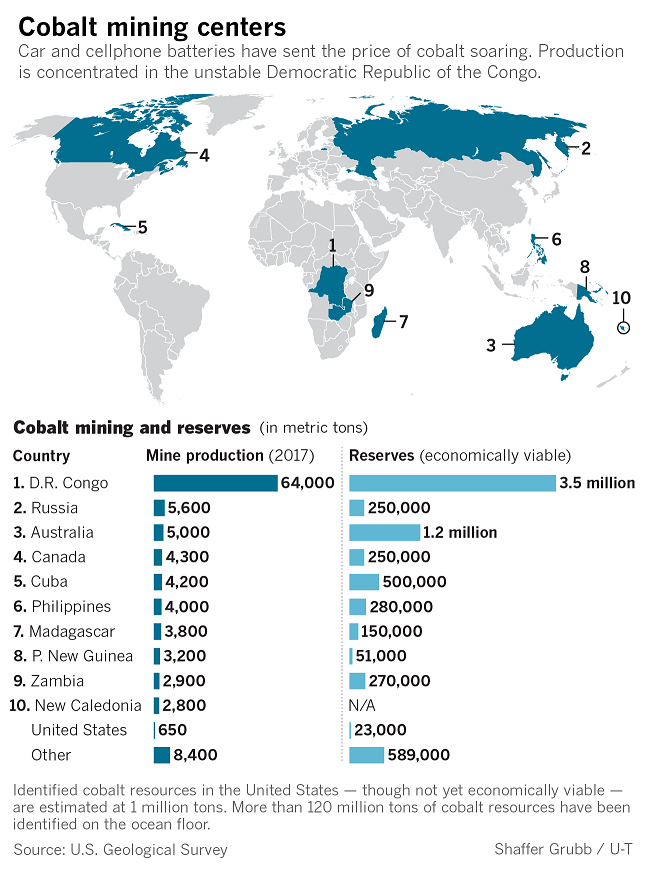Congo Uses Child Labor in their Cobalt Mines, So Let’s Mine Cobalt in Minnesota, Instead
Where do the metals used for your smartphone come from?
Cobalt is an important element used in cellphone batteries, and 55 percent of cobalt comes from the Democratic Republic of Congo, where the United Nations Children’s Fund estimates 40,000 children are working in cobalt mines.

These poor kids have been exploited enough, so I don’t want this to seem flippant or just an opportunistic topic to discuss in order to gin up support for mining.
On the other hand, those who oppose mining in Minnesota should be forced to acknowledge that their position means our state will not be doing its part to reduce cobalt consumption from countries that use child labor and have poor environmental protections.
For example, this video shows people washing the cobalt ore in a river. This crude processing technique would be unthinkable and incredibly illegal in the United States.
Minnesota contains the vast majority of the cobalt deposits of the United States. Approximately 95 percent of global supply of cobalt comes as a byproduct of nickel mining. Polyment and Twin Metals would produce cobalt as a byproduct of their copper and nickel mining operations.
Uses of Cobalt
42 percent of the global cobalt supply is used in batteries, including the batteries used in our cellphones, laptops, and the batteries used in electric cars and in batteries designed to store electricity generated from renewable energy sources, such as Tesla’s Powerwall.
Some of the companies that produce these products, such as Tesla, have said they will source their cobalt production from North America, but this seems unlikely to be possible unless more North American mines begin producing cobalt.

It is possible companies will find replacements for cobalt in their batteries, which help remove some of the ethical questions surround the metal someday. That day is not today, however.
Cobalt Production
The United States is currently an insignificant producer of cobalt. One mine, the Eagle Mine in Upper Michigan, produced 650 tons of cobalt in 2017, accounting for approximately 0.6 percent of global cobalt production.
A mine in the permitting process in Idaho will increase U.S. cobalt production in the coming years by producing approximately 1,500 tons of cobalt per year for approximately 15 years.
Cobalt Mining in Minnesota
Minnesota contains the vast majority of the cobalt deposits of the United States. In fact, just three of the several Duluth Complex deposits hold 47 percent of U.S. cobalt resources.
The South Maturi deposit (owned by Twin Metals) contains approximately 291,000 metric tons, the NorthMet deposit (Owned by Polymet) holds 92,400 metric tons, and the Mesaba deposit (Owned by Teck Resources) contains 89,000 metric tons of cobalt.
We can either mine cobalt in Minnesota, where environmental protections are strong and we have protections for mine workers, or we can continue to contribute to mines in the Congo, where environmental regulations are non-existent and children work in the cobalt mines.
It’s OK to oppose mining in Northern Minnesota if you’re willing to walk the walk by not having a smartphone or laptop, thereby removing yourself from the cobalt supply chain. Most people aren’t willing to make that life decision.
So, if you see a “Save the Boundary Waters” sticker on a Prius or a Tesla, make sure to ask them if they know where the cobalt in their battery probably came from.